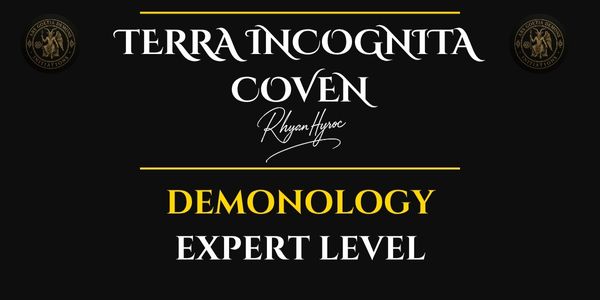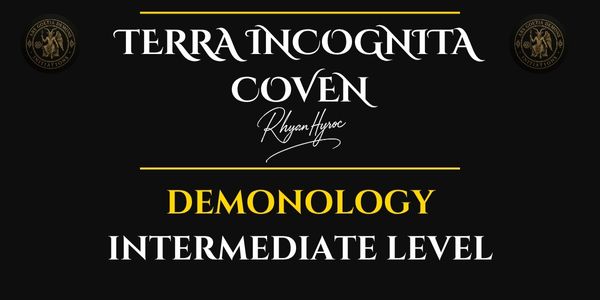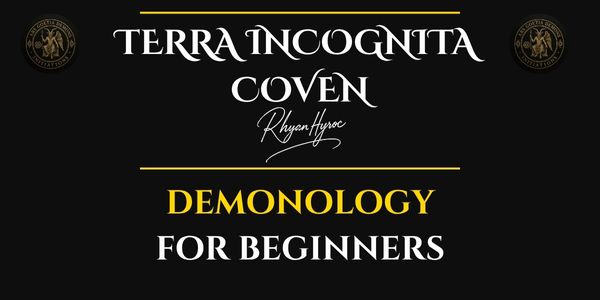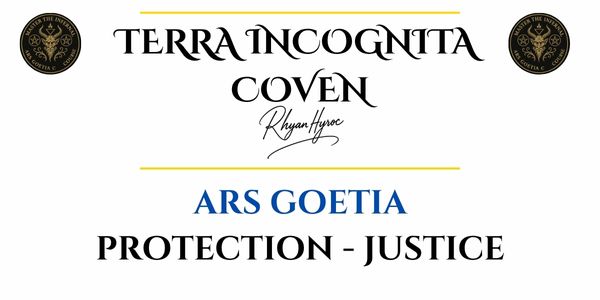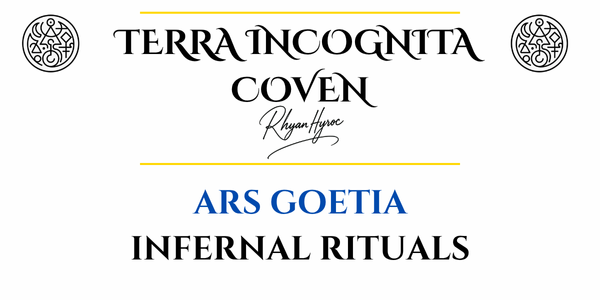Welcome to our Support Portal. Search for answers using the search box below,
or create a support ticket if you cannot find your answer.
Who is Demon Astaroth

Astaroth: The Grand Duke of Timeless Wisdom and Infernal Memory in the Ars Goetia
By Rhyan Hyroc, Leading Scholar of the Lemegeton and Ceremonial Demonology
- Astaroth: The Grand Duke of Timeless Wisdom and Infernal Memory in the Ars Goetia
- Profile in the Goetia
- Original Description and Modern Translation
- Iconography and Symbolism
- Historical Origins and Cross-Cultural Lineage of Astaroth
- Domains of Influence of Astaroth
- Ritual Considerations
- Comparative Spirits and Infernal Allies
- Modern Applications and Testimonies
- Ethical Posture
- Frequently Asked Questions About Astaroth
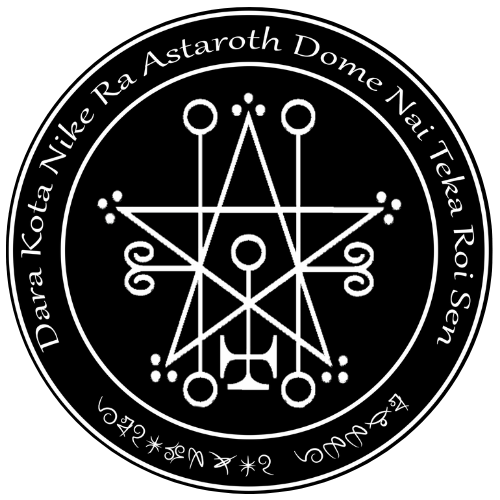
Profile in the Goetia
Astaroth appears as the twenty-ninth spirit in the Ars Goetia and is one of the most historically resonant and intellectually compelling figures in the Lemegetonic hierarchy. Holding the exalted rank of Duke, Astaroth governs forty legions of spirits and serves as a gatekeeper to ancient wisdom, forgotten knowledge, and metaphysical truths concealed by time. He is among the few spirits who combine the infernal with the celestial, and whose mythological roots span millennia of religious and esoteric tradition.
Unlike the fiery kings or martial warriors of the Goetia, Astaroth is best understood as a spirit of memory and metaphysics. He does not grant brute force or sudden change. Rather, he offers answers to deep philosophical questions, reveals the past, instructs in the nature of spiritual fall and redemption, and guides the magician toward understanding the fabric of divine and infernal reality.
Despite being ranked as a Duke, Astaroth is addressed with a degree of reverence usually reserved for kings — and in many occult traditions, he is recognized as a prince of high infernal intelligence. His appearance is dignified, his nature serious, and his domain vast: the memory of angels, the whispers of ancient laws, and the slow, clarifying light of infernal gnosis.
Original Description and Modern Translation
Original Goetia Entry (Sloane MS 3825):
“The Twenty-ninth Spirit is Astaroth. He is a Mighty, Strong Duke, and appeareth in the form of an angel riding on an infernal beast like a dragon, and carrying in his right hand a viper. He answereth truly to things Past, Present, and to Come, and can discover all Secrets. He will declare willingly how the Spirits fell, if desired, and the reason of his own fall. He can make men wonderfully knowing in all Liberal Sciences. He ruleth 40 Legions of Spirits.”
Modern Translation:
Astaroth is the twenty-ninth spirit and holds the title of Duke. He appears in angelic form, riding a dragon-like beast, and holds a serpent in his right hand. He truthfully reveals matters of the past, present, and future, and discloses all manner of hidden knowledge. He can explain the fall of the spirits and the reasons behind his own descent. Astaroth also grants profound understanding in the liberal sciences. He commands forty legions of spirits.
This translation captures the essence of Astaroth’s nature: part historian, part philosopher, and wholly devoted to the illumination of what lies behind appearances.
Iconography and Symbolism
Astaroth’s iconography is among the most striking in the Ars Goetia. He appears not as a monstrous hybrid, but as an angelic figure — a reminder of his original celestial station before the fall. His mount, a dragon-like beast, signals dominion over primordial forces and the unconscious layers of time. The serpent he carries is not a symbol of temptation, but of insight, healing, and divine paradox.
The angel-serpent duality in his imagery places him at the threshold between heavenly illumination and infernal revelation. He is often depicted with calm features and a melancholic aura, suggesting that his knowledge is not without sorrow. To speak with Astaroth is to enter into dialogue with a being who remembers paradise, understands exile, and reveals both as facets of the same spiritual journey.
Some grimoires link him to the planet Venus, but unlike spirits of seduction or charm, Astaroth reflects Venusian intellect — the ideal, the harmonious, the rational. Others associate him with Saturn, emphasizing memory, time, and philosophical rigor. In either case, his vibration is slow, deep, and persistent.
Historical Origins and Cross-Cultural Lineage of Astaroth
The figure of Astaroth emerges from one of the oldest layers of Near Eastern mythology. He is etymologically linked to the goddess Astarte, a Phoenician deity of fertility, war, and the morning star. In the shift from polytheism to monotheistic demonology, this celestial goddess was demonized, and her name reconfigured into masculine, infernal form.
In early Christian writings such as the Dictionnaire Infernal, Astaroth is portrayed as a demon of philosophical pride and idleness — a reflection of medieval anxiety about forbidden knowledge. Yet in occult circles, especially those influenced by Renaissance magic and post-Enlightenment esotericism, Astaroth was reclaimed as a principled and wise teacher.
In Kabbalistic and Hermetic adaptations, Astaroth often plays the role of “fallen memory”: a keeper of what was lost, banished, or censored. He serves not to tempt but to remind — not to distort, but to reintegrate the missing fragments of spiritual truth.
Domains of Influence of Astaroth
Astaroth’s powers are as nuanced as his mythology. His domains include:
- Revelation of hidden knowledge: He uncovers the truths buried by time or suppression
- Mastery of the liberal sciences: Astronomy, logic, rhetoric, music, mathematics, and philosophy
- Access to timelines: Past, present, and future events can be perceived or clarified
- Explanation of spiritual cosmology: Including the fall of spirits and the metaphysics of divine exile
- Memory retrieval: Assisting with dream recall, past life awareness, and ancestral knowledge
- Unification of paradoxes: Reconciling apparent opposites, bridging reason and intuition
- Deep prophecy: Offering visions and messages that transcend common divination
- Shielding against falsehood: Revealing lies in doctrine, tradition, or personal belief
- Enhancement of inner voice: Strengthening the practitioner’s intuitive clarity
- Philosophical clarity: Helping the seeker formulate questions of meaning and truth
These are not powers of flash or command — they are deep, refined, and often life-altering. Astaroth offers not gratification, but revelation.
Ritual Considerations
Rituals involving Astaroth are best performed when the practitioner seeks understanding, not advantage. His energy responds to silence, dignity, and the sincerity of inquiry. Suitable planetary influences include Saturday (Saturn) and Friday (Venus), especially during waxing or full moons.
Incenses that align with Astaroth’s presence include sandalwood, frankincense, and blue lotus. Blue, violet, or gold candles may be used, and his sigil is often inscribed in silver or on parchment. Invocations should be spoken clearly, not shouted. Meditation before and after is strongly recommended, as his messages often arrive in layered symbols, echoes, and dreams.
Many report that Astaroth’s arrival is marked by a stillness, a subtle gravity in the air, and the sensation of an ancient intellect listening more than speaking. He values coherence, not chaos. The more prepared the question, the more precise the answer.
Comparative Spirits and Infernal Allies
Astaroth can be viewed as an intellectual counterpart to several Goetic figures:
- Paimon, who teaches science and arts — but leans toward performance and command
- Marax, who imparts astronomy and herbs — yet lacks Astaroth’s metaphysical depth
- Stolas, who governs astronomy and crystals — but is less engaged in memory and history
- Buer, who teaches ethics and medicine — while Astaroth moves through cosmic philosophy
In a broader context, Astaroth resonates with:
- Thoth/Hermes, the scribe of gods
- Metatron, the angel of divine memory
- Kronos, the personification of time and limitation
This places Astaroth at the nexus of remembrance and wisdom, not merely knowledge.
Modern Applications and Testimonies
In modern ceremonial and solitary practices, Astaroth is frequently invoked by:
- Scholars and researchers seeking clarity or synthesis
- Artists and composers confronting creative blocks
- Magicians working on timeline repair, dreamwork, or divination
- Those undergoing spiritual crisis who seek philosophical grounding
- Practitioners recovering from cults, religious abuse, or mental fragmentation
- Writers or speakers struggling with articulation and truth expression
- Students of esotericism seeking deeper frameworks beyond surface-level teachings
He is especially effective in long-term workings, where clarity unfolds in layers. His insight does not shout — it accumulates.
Contemporary reports emphasize that Astaroth respects personal will. He will not override one’s freedom. He teaches through metaphor, recollection, and guided questions. His voice is often soft but unrelenting.
Ethical Posture
Working with Astaroth is a path of integration. He does not “fix” the seeker; he brings them into confrontation with their own timeline, beliefs, and forgotten truths. His insights may destabilize assumptions, yet always offer the possibility of higher coherence.
He is not a spirit of emotional comfort — he is the archivist of what must be remembered. Invoking Astaroth is like opening an ancient library where one’s own story, and the story of the cosmos, awaits in half-faded pages. He will not read them for you — but he will shine the light.
For those willing to walk the spiral of memory and uncover the wisdom of fallen stars, Astaroth remains a teacher of eternal relevance.
Begin Your 21-Day Attunement to Astaroth – Voice of the Forgotten Light
This guided initiation connects you to the spirit of timeless knowledge through daily mantras, meditative alignment, and seven remote rituals performed by Terra Incognita Coven. Awaken the memories your soul has never forgotten and reclaim clarity beyond illusion.
Course Link: https://terraincognitacoven.com/courses/the-path-of-sovereign-knowing-21-day-spirit-initiation-with-astaroth/
Frequently Asked Questions About Astaroth
1. Who is Astaroth in the Ars Goetia?
Astaroth is the 29th spirit listed in the Ars Goetia. He is a Great Duke who governs 40 legions of spirits and appears in angelic form riding a dragon. Astaroth is known for his profound wisdom, access to hidden knowledge, and mastery over time and memory.
2. What is Astaroth’s main power?
Astaroth grants knowledge of past, present, and future events. He reveals hidden truths, teaches the liberal sciences, and can explain the metaphysical causes behind spiritual or historical events — including the fall of spirits and cosmic origins.
3. What does Astaroth look like?
He appears in angelic form, riding an infernal dragon and holding a serpent. His form reflects his celestial origins and his role as a guardian of divine memory. He is often described as calm, dignified, and deeply present.
4. Is Astaroth dangerous to work with?
No, Astaroth is not dangerous if approached with respect, focus, and authentic intention. He does not tolerate flippancy or arrogance, but he is deeply cooperative with seekers of real wisdom and truth. His energy is stable, sober, and profound.
5. What areas of life can Astaroth assist with?
Astaroth helps with philosophical clarity, memory retrieval, dreamwork, timeline repair, esoteric studies, past-life insight, and accessing forgotten truths. He is also an excellent ally for writers, researchers, scholars, and spiritual teachers.
6. What offerings are appropriate for Astaroth?
Offerings such as sandalwood, frankincense, blue candles, silver objects, or written questions are suitable. More than any item, Astaroth responds to clear questions, focused silence, and sincere reverence for knowledge and remembrance.
7. Is Astaroth associated with any planet or day?
Yes. Astaroth is often aligned with Venus (intellectual beauty and balance) and Saturn (timeless wisdom and memory). Fridays and Saturdays are favorable for his rites, especially during waxing moons or full moons when clarity is sought.
8. Can Astaroth help me remember past lives?
Yes. Astaroth is uniquely skilled in revealing past-life memories, ancestral knowledge, and hidden layers of personal or spiritual history. He aids in stitching together timelines, often through dreams, symbols, and sudden inner clarity.
9. What kind of guidance does Astaroth offer?
Astaroth offers subtle, reflective guidance — often through synchronicities, philosophical insight, or visionary dreams. His advice is rarely loud or dramatic, but accumulates as deep understanding over time. He is ideal for long-term work.
10. How can I begin working with Astaroth safely?
A structured approach is ideal. The Voice of the Forgotten Light – 21-Day Attunement to Astaroth offers daily mantra work and seven remote rituals performed by the Terra Incognita Coven to align you with his current. Begin here: https://terraincognitacoven.com/courses/the-path-of-sovereign-knowing-21-day-spirit-initiation-with-astaroth/
References
- Ars Goetia Demons – Astaroth
An authoritative digital compendium profiling each of the 72 spirits of the Lemegeton. The Astaroth entry includes sigils, descriptions, and ritual associations based on classical and modern interpretations.
https://arsgoetiademons.com/search?q=astaroth - Sacred Texts – The Lesser Key of Solomon
This foundational online source contains the original Ars Goetia grimoire in full, providing historical context and the classic textual basis for Astaroth’s place in demonology.
https://www.sacred-texts.com/grim/lks/index.htm - Esoteric Archives – Lemegeton Clavicula Salomonis
This academic-grade edition by Joseph H. Peterson features multiple manuscripts, variant readings, and translations of the Goetia, making it essential for any rigorous study of Astaroth.
https://www.esotericarchives.com/solomon/lemegeton.htm - Deliriums Realm – Astaroth
Explores the demon Astaroth’s role in medieval theology, grimoires, and early demonological treatises. Highlights Astaroth’s evolution from Canaanite deity to infernal Duke.
https://www.deliriumsrealm.com/astaroth-demon/ - Occult-World: Astaroth
Summarizes Astaroth’s attributes and functions in ceremonial magick, including symbols, associations, planetary rulership, and relevance to necromantic operations.
https://occult-world.com/astaroth/
Demonology Expert Level: Advanced Systems, Possession Theory & Living Demonology
Unlock Sovereignty in the Infernal CosmosYou already feel it. The pull. The call. The invisible…
Demonology Intermediate Level: Mastering Infernal Pathways
Advanced Systems, Possession Theory, and Living DemonologyEnrollment Now Open – Begin Your Ascent Beyond the…
Demonology for Beginners: History, Spirits, and Practical Frameworks
A Complete Online Course for Spiritual Seekers Ready to Understand the Truth Behind DemonsStep Into…
Course for Protection, Justice & Breaking Malice
The Course for Protection, Justice & Breaking Malice at Terra Incognita Coven is a transformative…
Master the Royal Demons
Master the Royal Demons: Transform Your Spiritual Path with Ultimate Authority and Healing is a…
Master the Infernal: Course in Infernal Rituals & Ceremonial Magic
The Master the Infernal: Course in Infernal Rituals & Ceremonial Magic is the core initiatory…

